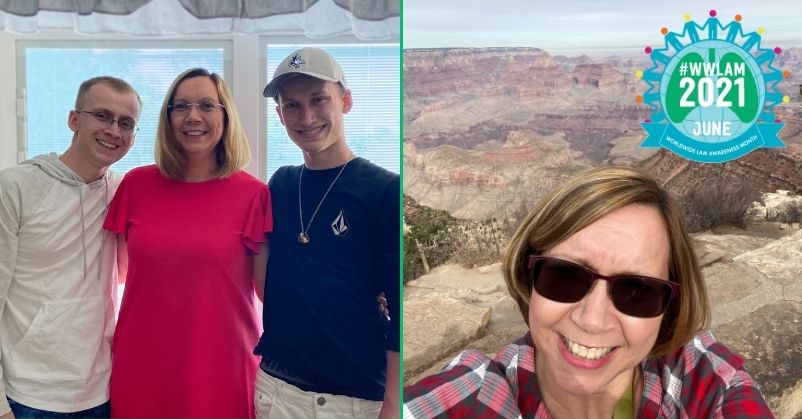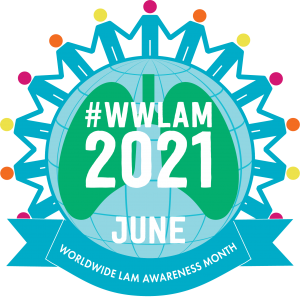For Worldwide LAM Awareness Month (WWLAM) 2021, we’re sharing stories from women who were diagnosed within the past year. These women faced a life-changing diagnosis during one of the most difficult years in history. Though their individual stories are unique, they share a sense of fortitude and a strong commitment to the LAM community.
Susan, a 51-year-old registered nurse living in Florida, offers great insight into the benefits of working with a LAM specialist as well as helpful tips for managing some of the logistical hassles of a chronic illness.
LAM diagnosis
I started having problems in August 2019. I coughed basically nonstop. In October 2019 I went to an urgent care on a weekend. They said I had bronchitis. 14 days later I had no relief, so I went to my PCP, but he was gone so I saw someone else in the practice. He told me I was having an asthma attack. 14 days after that treatment and still no relief, I saw my actual PCP. He ordered a CAT Scan. It was January 2020 when I went in for the follow up. He told me that the scan showed that I may have “something” going on but it would be extremely unlikely and rare. Just to be sure he sent me to a pulmonologist. One look at the CT and my pulmonologist said it was LAM but he wanted to do a VATS biopsy. He had only seen LAM three times in his career and he is near retirement now.
As a nurse, my biggest fear is a chest tube and ventilator so I freaked out and said no. It took me until May to wrap my head around the biopsy. In July, at the height of the pandemic in Florida, I agreed to it. The local pathology lab said it was emphysema. Although that isn’t a great diagnosis, it sure looked better than what I was reading about LAM, so I was relieved. Then the pathology report came back from Mayo Clinic in Phoenix and it was LAM. How could this be? Shock and awe set in.
Thankfully, The LAM Foundation set me up with a LAM specialist, Dr. Ataya in Gainesville. He said that the VATS was not necessary. He could see from a CT scan done three years ago that there is an AML in my right kidney. So I have obviously had this for a while.
Working with a LAM specialist
Dr. Ataya is absolutely fabulous. After The LAM Foundation told him about me, he picked up the phone and called me himself. He said that he wanted to see me the next week. We talked for about 30 minutes and he wouldn’t hang up until he made sure he had answered all of my questions. He also instructed me to email him directly if I needed anything at all.
He takes his time and truly listens to me. I never feel rushed when I see him or talk to him on the phone. He also looks at all areas of my health, not just my lungs. He looks at all my labs, allergy issues, cardiac tests, etc. I carry his number with me in a luggage tag holder on my purse. If I have any issues I go to the nearest ER and the first phone call is to him.
He also gave me a true treatment plan. When I was diagnosed, my local pulmonologist had said “go live your best life for as long as you can.” That is not a treatment plan. Dr. Ataya and I came up with a plan together.
Being a nurse with LAM
I am a nurse. That can be a hinderance because I know too much. There is no way to sugar coat or soften things. On the flip side, as a nurse I know not to believe everything I read, as well as the more reputable resources to look at.
Helping others is what makes me happy. Almost to a fault. I will tire myself out beyond belief to help someone else. And with my LAM, fatigue is the worst. Even being a nurse, I did not understand what fatigue really was until now. It is very frustrating to sleep all night and then still have so much difficulty getting yourself going in the morning. Sometimes it feels like my entire body is in quicksand and I am doing everything I can to make my way through it. I want to do things, but I have to force myself because I have no energy to do it. The worst part of that is that people don’t understand. They have no comprehension when I try to explain it.
I also get short of breath easily. It’s kind of embarrassing to be talking to someone and suddenly I am short of breath and winded and all I was doing was talking. I kind of like wearing masks now with COVID because I can hide my shortness of breath a little.
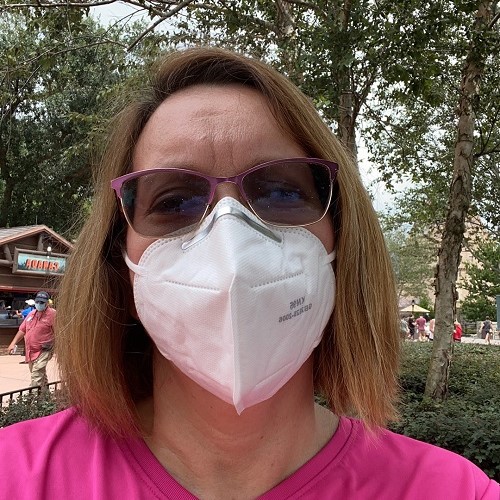
Tips and advice
I know it isn’t easy but first you need to breathe. Be patient with yourself. Allow yourself to go through the stages of grief and don’t let anyone tell you how long that should take you.
Connect with others with the same diagnosis as soon as you can. That support system is so important. The LAM community is amazing. It is a judgement-free sisterhood and a wealth of information and resources. No one else truly knows what you are going through, but they will.
Find a doctor that you are comfortable with. Start a medical notebook. Get copies of all labs, tests, physician progress notes, medications, insurance, information about the disease, etc. When you have an MRI or CT Scan you never leave without a CD copy of the test. It all goes in the notebook. The notebook is taken to all appointments. Never leave anything with any doctor. They can copy it but they cannot have the original. My notebook is on my desk. My sons know that if I go to ER, they are to bring the notebook there immediately.
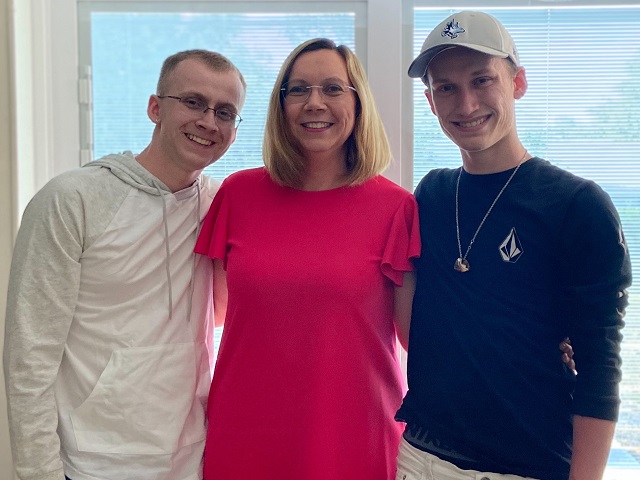
Bright side
LAM has made me stop and appreciate the little things in life like amazing sunsets, a walk on the beach, beautiful flowers. We take so much for granted and we don’t slow down to truly see things for their beauty. I worked a lot before LAM, and now I am trying to slow down and spend more time with my boys and enjoying life. I love traveling and I don’t save up my vacation time anymore. I use it and travel while I can. I needed to slow down a little, LAM has definitely helped me do that.
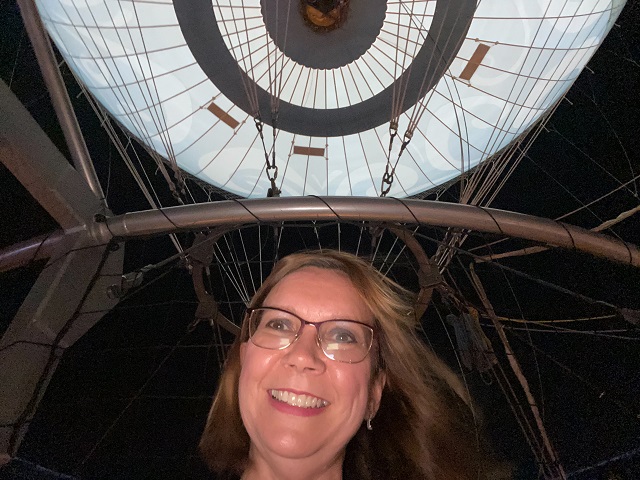
Author Bio
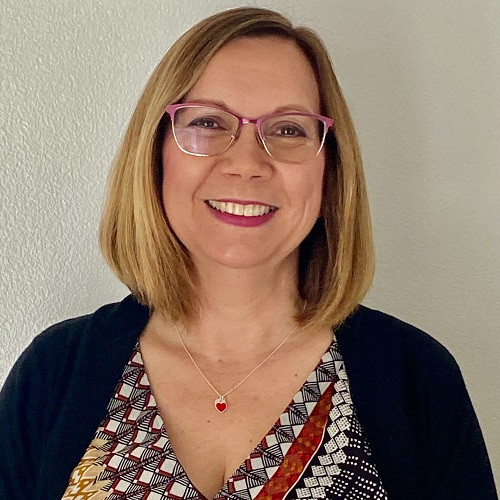
Susan is a 51-year-old Registered Nurse currently living in Apopka, Fl. She has two sons, Caleb (22) and Noah (20). Her goal is to raise awareness so others with LAM don’t suffer. Even as a nurse for 30 years, she had never heard of LAM before her diagnosis.
<< Read more inspiring stories from women with LAM for WWLAM 2021 >>

